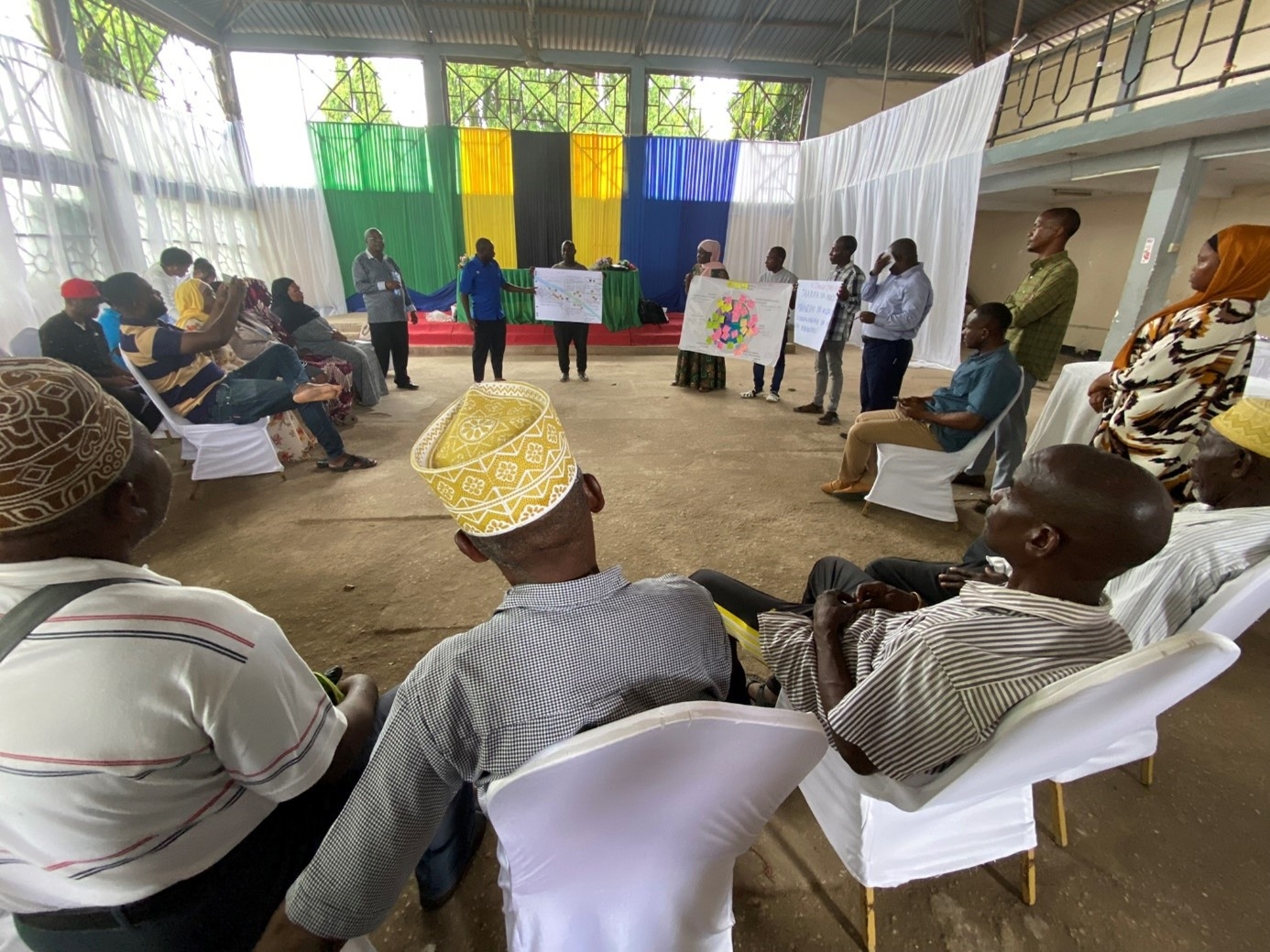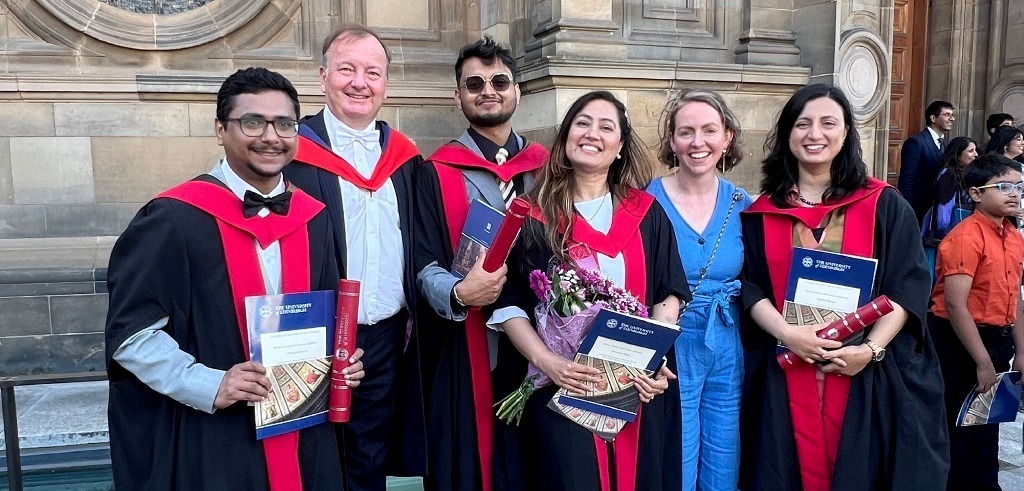
- Close
22/12/2023 | Dar Es Salaam
Mianzini’s (Dar Es Salaam) journey with Tomorrow’s Cities Hub just started.

Residents exchanging thoughts on their visions for the future.
Mianzini, an administrative ward in the Temeke district of Dar es Salaam, Tanzania, has recently joined Tomorrow’s Cities Hub and deployed the Future Visioning and Validation Workshops over 10 days. Activities brought together different groups, including elders, youth, valley residents, and local leaders.
Dar es Salaam, one of the fastest growing cities in the world.
Established in the late 19th century during the reign of Sultan Majid bin Said, the first leader of Zanzibar, Dar es Salaam, meaning “abode of peace” in Arabic, has evolved into Africa’s fifth most populous city, boasting a population of over five million. Notably, it has earned the distinction of being the second-fastest-growing city worldwide, with projections indicating a substantial increase to 13.4 million residents by 2035. Amidst this growth, Dar es Salaam grapples with recurrent flooding, especially in unplanned settlements where 70% of the residents live. Mianzini is one of such places.
One of the 23 wards of Temeke Municipality, part of the greater Dar Es Salaam, Mianzini is home to nearly 23 thousand people. It’s been developed along a hilly terrain which, during the rainy season, sees its lower areas transforming into a small river prone to landslides along its banks. Along the slopes, informal housing is the predominant feature. Adding to the challenges, the settlement grapples with inadequate infrastructure services, such as pit latrines, and lacks a storm-water drainage system, making it vulnerable to flooding.

Dar es Salaam urban growth between 2001 and 2023. On the right an aerial view of the Mianzini area showing a dramatic urban growth towards the valley.

Valley area of Mianzini on a heavy rain day.
Differently to previous Tomorrow’s Cities deployments, in Mianzini Future Visioning and Validation workshops, were separated by a mere 7-day gap, providing a unique experience for participants. In alignment with the Tomorrow’s Cities strategy, the initial workshop was dedicated to generating visions that articulate aspirations for the future urban environment across various social perspectives while the second focused on validating the technical interpretations of bottom-up generated land use plans and policies. It involved discussions on urban trends and the associated trade-offs, such as the balance between preserving green spaces and accommodating population growth. Despite technical challenges of organising the workshops in such a short period, work gained momentum, fostering rich discussions and enabling participants to build upon proposals with fresh memories.

‘Co-mapping’ exercise. Part of the Future Visioning Methodology.
A diverse group of stakeholders, including elders, youth, valley residents, and local leaders, played pivotal roles during the workshops.
As guardians of memory, elders understanding of the region’s history connects the past and the present exerting a strong influence in the community. In its turn, the youth group, is an energetic force shaping Mianzini’s future, that injected vitality into discussions. As a vibrant demographic, they embody the dynamism of Tanzania, contributing to a forward-looking perspective to the community’s evolution.
Living on the highest risk areas of Mianzini, Valley residents, face increasing pressure amid climate challenges. With risks of floods and landslides, discussions about land regularization weigh heavily on their shoulders. Finally, Mtaa Leaders and “local experts” navigate daily risks, bridging the gap between Mianzini’s community challenges and higher government tiers. Their in-depth knowledge and commitment position them as crucial advocates in the pursuit of community resilience.
Shaping Tomorrow – Community Visions and Priorities
The heartbeat of Mianzi’s vision emerged as a common thread – the need for more and better infrastructure. All groups unanimously underscored the necessity for improved road networks, reflecting a collective concern. Additionally, a shared focus on flood management infrastructures emerged as a notable common interest.
 Presently, community-led strategies for flood control involve the practice of adding waste to stream beds reduce stormwater intensity. However, residents express a desire for more robust and efficient measures that address the structural aspects of flood control.
Presently, community-led strategies for flood control involve the practice of adding waste to stream beds reduce stormwater intensity. However, residents express a desire for more robust and efficient measures that address the structural aspects of flood control.
Visions diverged between the perspectives of elders and youth, with the younger generation expressing openness to increased density and a desire for a ‘smart’ Mianzini. These differences underscore the significance of maintaining social diversity, serving as a valuable learning tool for groups to comprehend the potential risk consequences associated with various planning decisions. Valley residents, most households represented by women, were keen to discuss resettlement and land regularization, while local leaders focused on public services such as schools and hospitals.

Representatives from the youth group drawing their land use plans – one of the spatial expressions of future visions, which later compose a ‘visioning scenario’ in the Tomorrow’s Cities methodology.
As part of the project’s methodology, community groups had a chance to, not only express their desired future, but also get a glimpse of, and discuss, the quantitative data that will shape or constraint their visions. For instance, all groups discussed data-based assumptions about height, density and social composition 30 years into the future. Whilst acknowledging the need for accommodating future generations, many residents were keen to preserve a low density Mianzini.

Spokespersons for the Valley Residents group showing their validated land use plans and policies to the whole Mianzini (after the end of the Validation Workshop).
As Dar es Salaam navigates its trajectory with Tomorrow’s Cities, future scenarios get further consolidated and will soon go through a computational modelling stage. All groups will soon learn about the performance of their bespoke plans in the event of future floods and landslides. This brings agendas related to infrastructure, housing and climate change to the forefront of the city’s policy discussions.


